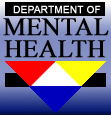Welcome to the Department of Mental Health's Medical Lecture Series
CBC Fingerstick Hematology Monitoring Presentation
The Missouri DMH now has a statewide contract with Boyce and Bynum (B&B) Pathology Laboratories. As a result of this contract, patients on clozapine will now have the option of hematology monitoring by fingerstick or venipuncture.
Historically, the burden of prescribing clozapine has drastically limited its use in many settings. The many barriers described in the literature include lack of training and experience of physicians, fear of patient refusal or non-adherence to blood work, time commitment for paperwork and follow-up, and fear of side effects such as agranulocytosis, weight gain, myocarditis, and seizures. Studies have shown the most significant barriers include patient refusal of blood monitoring and baseline blood tests, followed by barriers of tolerability and significant medical factors/complications. The Missouri DMH has addressed a major barrier by providing patients with a less invasive hematologic monitoring technique.
This educational video provides a comprehensive review of the following:
Accuracy of the ABX Micros 60 analyzer
Clinical differences between CBCs with 5-part vs. 3-part differential
Comparison of a granulocyte count and ANC
ABX Micros 60 flags (e.g., detecting eosinophilia & basophilia)
Personalized clozapine database
Lab orders and consent forms
Protocol considerations
Managing Aspiration and Aspiration Pneumonia in the Developmentally Disabled
When people tend to think of leading causes of death, it is generally heart disease/cancer/stroke that is first considered. This would be wrong in regards to the DD community; the leading cause of death in people with DD is Aspiration Pneumonia. Every year, people with DD die because they have choked or aspirated.
Aspiration is a common problem among people we support who have difficulty swallowing or “dysphagia”. Aspiration is a word that means food or fluids that should go into the stomach go into the lungs instead. When such material goes into the lungs it can cause Aspiration Pneumonia. Aspiration Pneumonia can worsen quickly if not properly identified and treated. Aspiration Pneumonia can result in death.
If we educate, advocate, and take precautions, some deaths may be prevented.
Antipsychotic medications are commonly used for the treatment of schizophrenia or bipolar disorder, and may also be used in the treatment of other disorders (eg, anxiety, depression). This presentation focuses on the treatment of schizophrenia with antipsychotic medications, including dosing, risks and benefits, monitoring, and management of side effects.
Preventing a relapse or psychotic episode is the key component in the successful management of schizophrenia. With each relapse, additional brain tissue is lost until the patient eventually becomes treatment resistant. Medication adherence is imperative to preventing relapse. Unfortunately, poor medication adherence is common among people with mental illness resulting in poor health outcomes and increased health care costs. Increasing education about mental illness and medications among health care workers and patients helps to overcome one of the major medication adherence barriers.
This educational video provides a comprehensive review of the following:
Basic framework of schizophrenia
Antipsychotic medications
1st generation antipsychotic medications
2nd generation antipsychotic medications
Long-acting injectable antipsychotic medications (LAIs)
Extrapyramidal side effects (EPS)
Monitoring for safety and efficacy
Drug toxicity syndromes
Are you up-to-date on the latest medication treatments available for anxiety disorders? If there is any doubt, don’t grab your head and shout, just take a ride with me down the antianxiety medication route.
This educational video provides a comprehensive review of the following:
Basic framework of anxiety
General anxiety disorder (GAD)
Panic disorder (PD)
Obsessive compulsive disorder (OCD)
Post-traumatic stress disorder (PTSD)
Social anxiety disorder (SAD)/Social phobia

